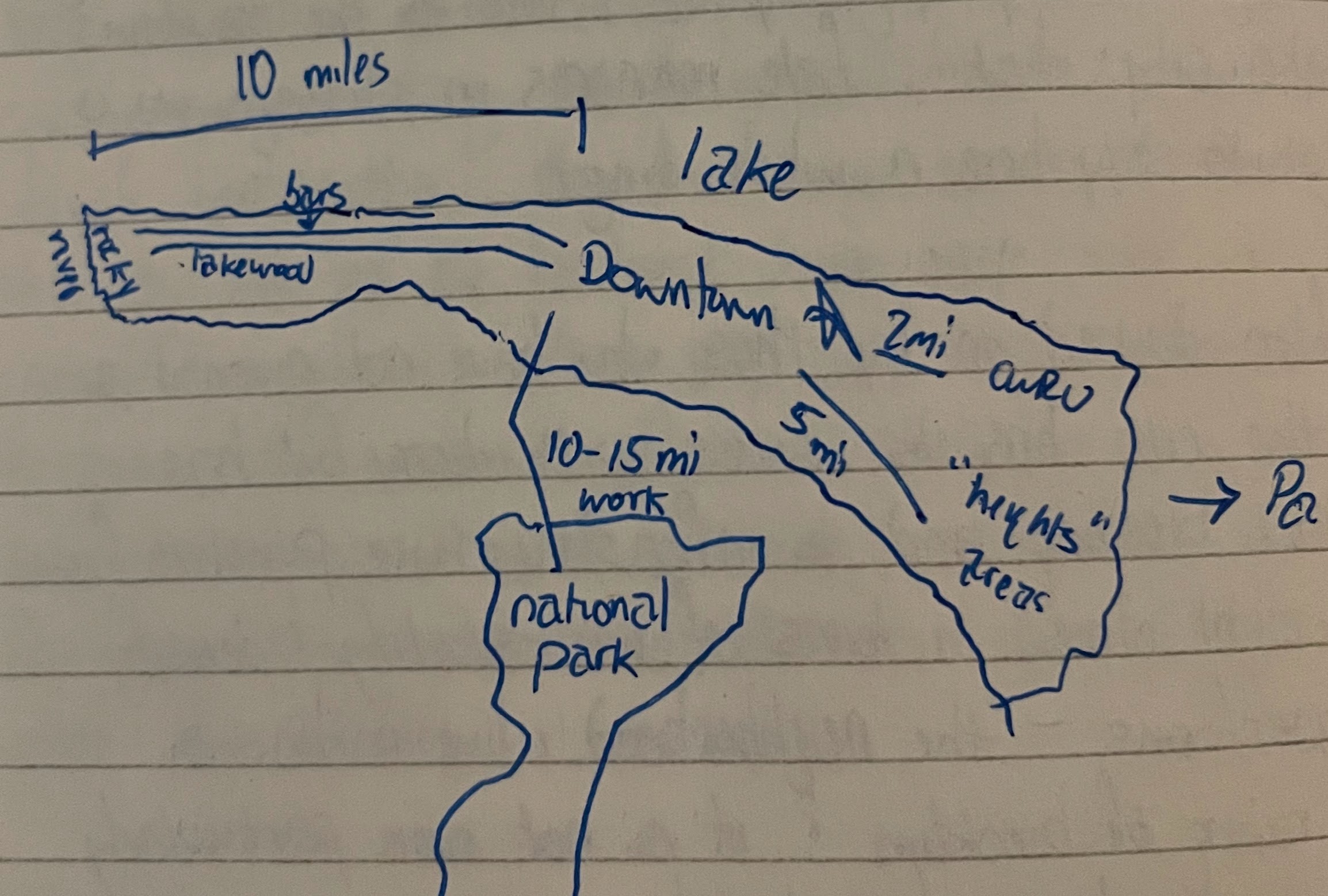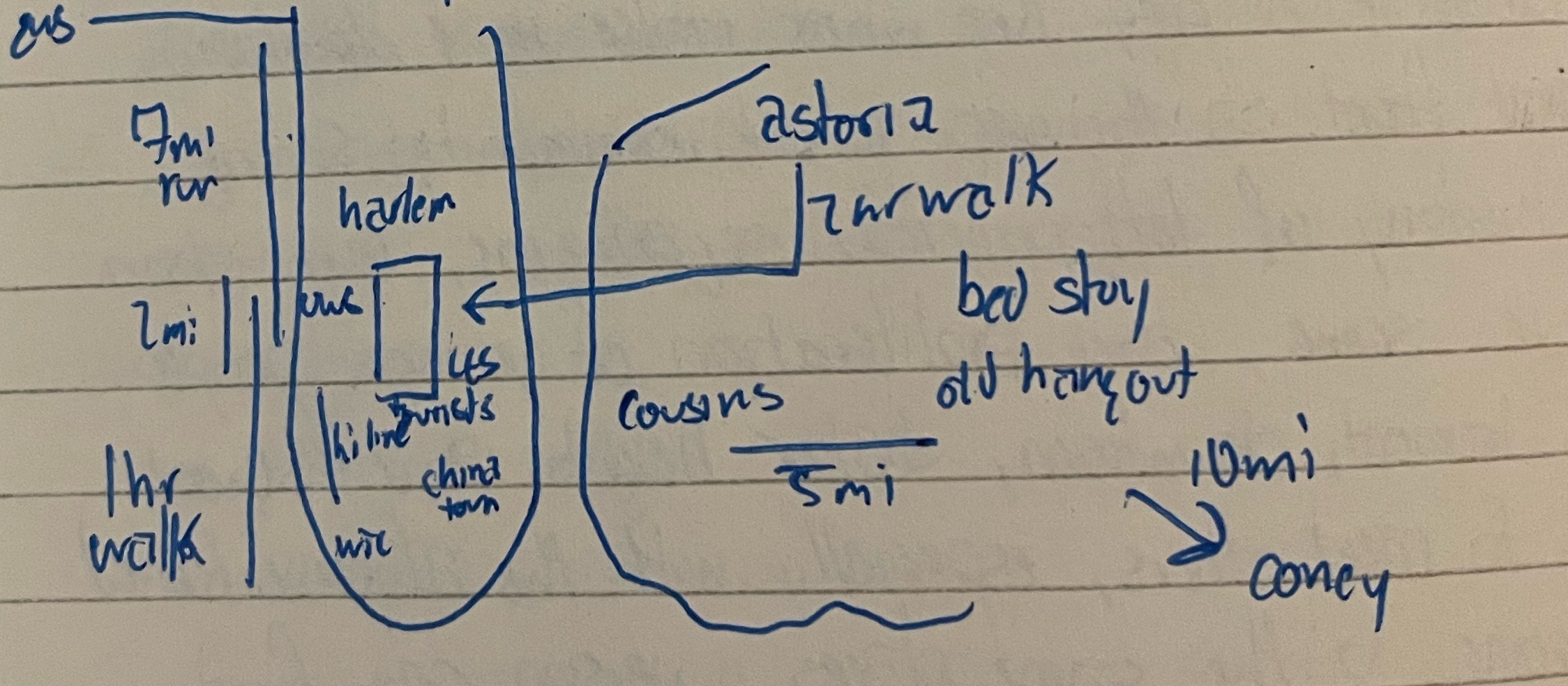nyc cityscapes
March 22, 2025
i’ve lived in cleveland for seven months now; had a quirk of my company’s business plan not gone into action, i would be beginning to pack my bags and say my goodbyes as i looked to the mountains near salt lake city. luckily fate intervenes in strange ways and i’ll get to stay here a while longer – i much prefer the near-northeastness of NEOH versus the culture of salt lake city.
cleveland is often dunked on by those who have not given it a fair shot. the city has its issues with decay, but has staunched the bleeding, and its infrastructure punches far above its weight class. in terms of walkability and density, it also outperforms – the neighborhood i live in has a similar walkability rating to brooklyn, and it is not a sought after neighborhood at all. the bones are there.
the flesh and blood of a city are what make it; cleveland excels on that front. a thriving jewish community, strong queer scene, history of left political organizing, larger-than-expected music scene, and proliferation of younger people in Ohio city, tremont, downtown, shaker heights, and lakewood make it easy to meet others, especially with the aforementioned density. going to the same places, a person can meet their crowd. in every regard, the experience of living in cleveland outstrips that of the sunbelt hellscapes which are designed fro the purposes of atomization.
i say all of this as a wind-up to discuss new york city. arguably one of the best places to live in terms of the above amenities, and to point out what cleveland is lacking as well. first is simply the scale of walkability. due to being on a lake and containing an industrial valley in the center of its geography, my mental model by foot and bike looks like this:

meanwhile, my mental map of nyc looks like this:

the difference here is that of density – each point on the map of nyc represents much more than that of cleveland. part of this is scale. if cleveland were to raze the valley and infill it with a new neighborhood, we would have similar maps. the other part is population – variety is a function thereof and if a city does not have enough people, it will inevitably have less opportunities to demonstrate neighborhood differences. however, the material is there. comparing these to my hometown, a city with population numbers between the two, we get this:

despite the size and number of people, it is incredibly low density and cannot support unique neighborhood subcultures aside from those created by racism and redlining – see The Accommodation by Jim Schultz.
Furthermore, cleveland is missing some kinds of people – highly-motivated strivers. this is not to say that it is completely devoid of them – many are my friends – but there is a deficit when compared to austin or nyc. partially this is due to the recognition that cleveland is only a local optimum. living here is better than living in youngstownm so the most motivated of ohio move here or columbus, but the most motivated of those move to areas with more opportunity. thus cleveland has more motivated people than most of america, but less than the cities which fuel our current economic engines.
this is the essential tension between the outskirts and large cities which has existed since the existence of cities as a distinct unit and there is no solution but to make cleveland more appealing. how to do this is an unanswered question; the city is certainly trying in terms of amenities, but opportunity is an economic function and much of northeast ohio may not recover its former industrial base. any future revitalization requires investment from larger companies and relocation similar to that in nashville and austin. this can only occur on longer time scales; perhaps gen. alpha will benefit from this.
the midwest is dotted with many similar cities, all sort of up-and-coming skeletons of what they once were with their bones littered across the countryside. the abandoned factories and warehouses scattered down Euclid’s – once millionaire’s row – a reminder of what was once here. someday these cities will grow again – i don’t think that the positive sentiment toward the sunbelt will last forever – but it is not quite the moment for the great lakes. for those of us here, it’s another open question whether to remain in hope.